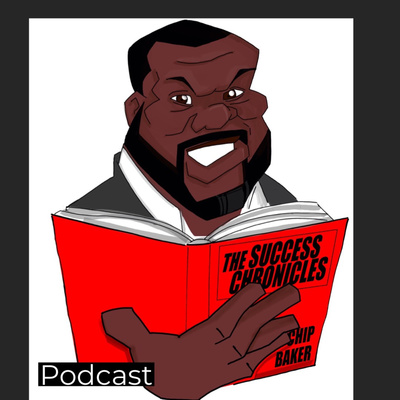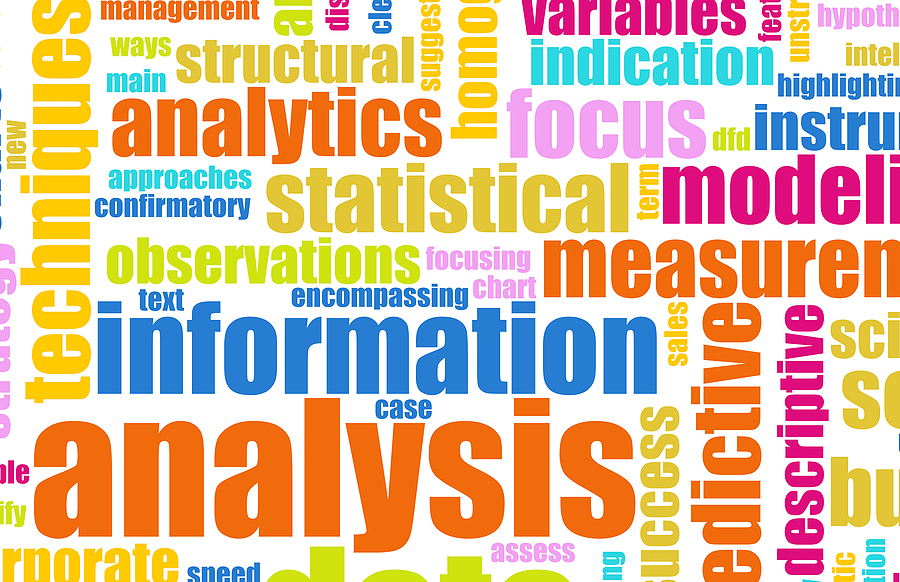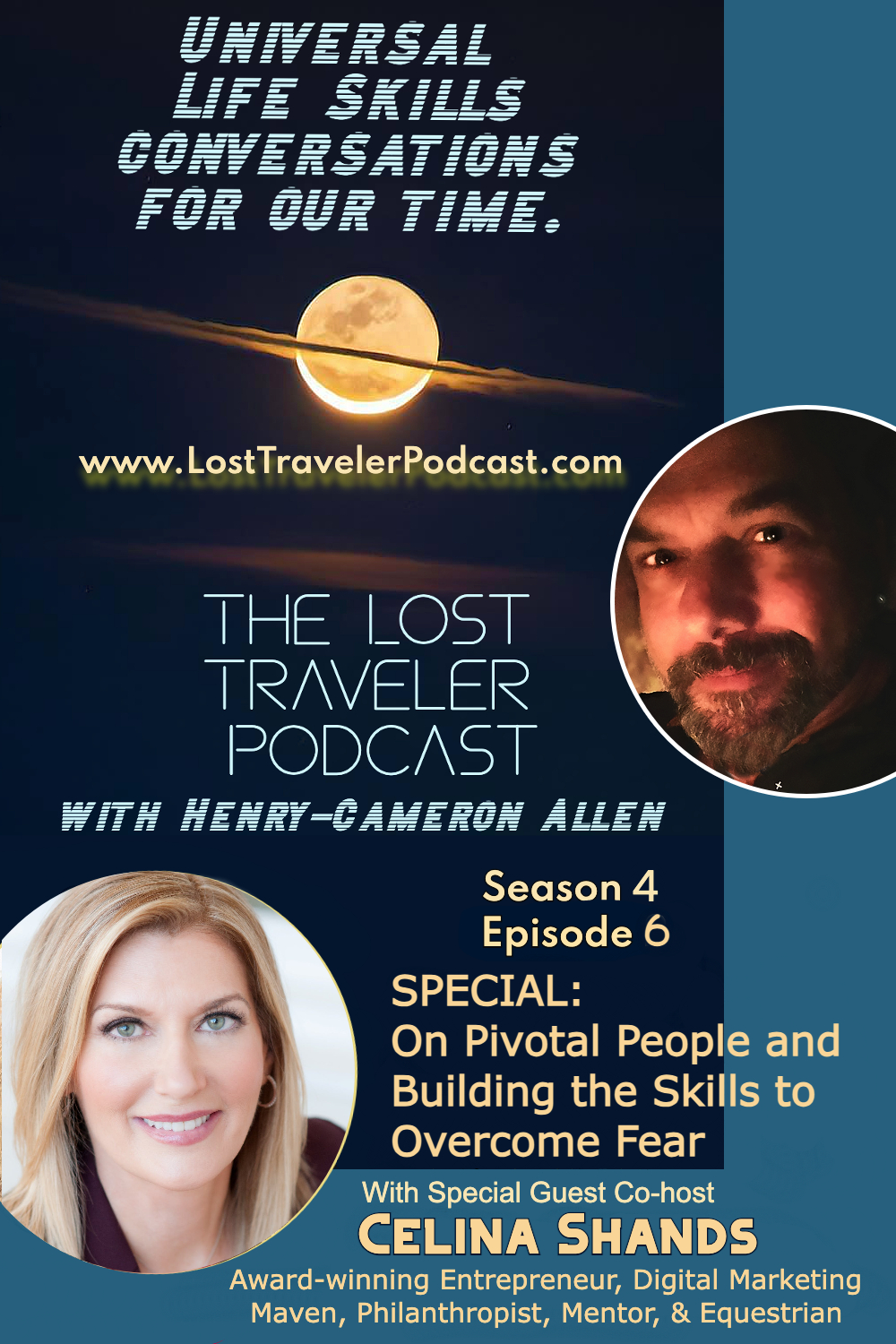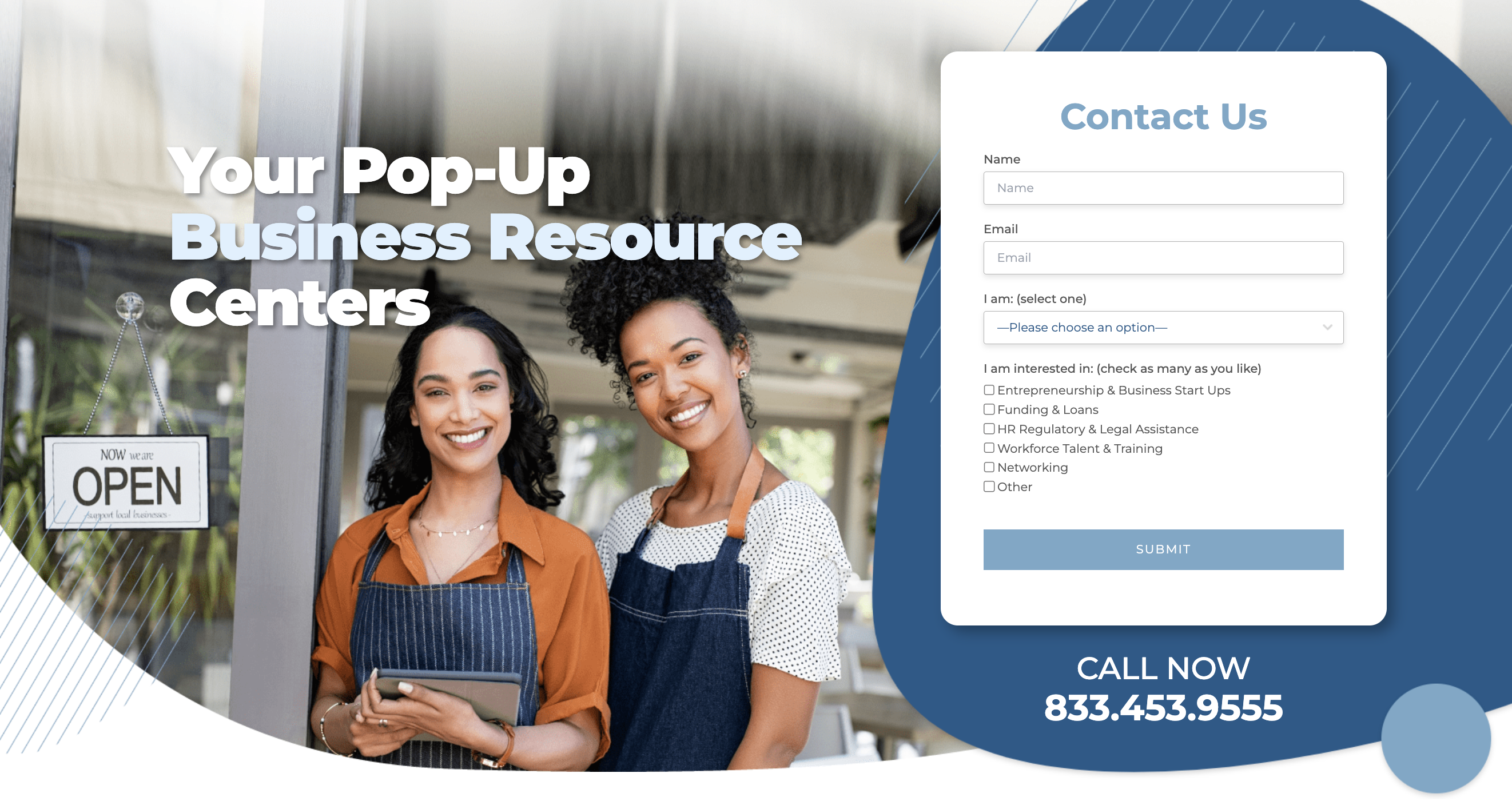Author: Mike Scheideman

From Challenging Beginnings to Inspiring Success: An Interview with FCM’s CEO, Celina Shands
Get to Know our CEO! From Challenging Beginnings to Inspiring Success: An Interview with FCM’s CEO, Celina Shands In a recent episode of The Success Chronicles, host Chip Baker sat down with FCM’s Founder and CEO, Celina Shands. Celina’s journey from a tumultuous childhood to becoming a successful entrepreneur and advocate for underserved populations is […]
Get to Know our CEO!
From Challenging Beginnings to Inspiring Success: An Interview with FCM’s CEO, Celina Shands
In a recent episode of The Success Chronicles, host Chip Baker sat down with FCM’s Founder and CEO, Celina Shands. Celina’s journey from a tumultuous childhood to becoming a successful entrepreneur and advocate for underserved populations is nothing short of inspiring. In this interview, Chip and Celina explored her background, her path to success, and her mission to create positive change in the world.
Celina Shands hails from the deep south of North Carolina, where she faced the challenges of growing up in a family plagued by alcoholism, just like 10.5% of all U.S. children ages 17 and younger. In such an environment, trust and support were hard to come by. Fortunately, Celina found a constant source of support in her older sister, who not only ensured her basic needs but also instilled in her the belief that she could achieve anything. Celina’s sister became her first mentor, teaching her the value of determination and hard work. Studies show the power of mentorship for youths are vast, including increased graduation rates, healthier relationships and lifestyle choices, higher college enrollment rates, and a decreased likelihood of drug and alcohol use (Benefits of Mentoring for Young People).
To channel the anxiety and negativity from her home life into something positive, Celina turned to sports. She played a variety of sports, from softball and volleyball to basketball and track and field. Sports taught her valuable life lessons, including the importance of collaboration and competition. Celina acknowledges her coaches, teammates, and friends as pivotal people who played a significant role in her life.
In 1984, Celina embarked on a journey to San Francisco, leaving behind her small southern hometown. With just $50 to her name, a credit card, and a new car payment, she faced fear and uncertainty. But this leap of faith led her to a new world. She pursued a master’s degree in sports medicine and started her first company, “Life at Its Peak,” which focused on integrating sports medicine into medical practices. However, evolving insurance laws led her to reinvent herself.
Celina’s journey eventually led her to San Diego, where she worked as a marketing director for the San Diego Health and Human Services Agency. During this time, she became involved with workforce development, a term that was new to her but resonated with her personal experiences. Workforce development is a system that helps youth and job seekers find their career paths through education and training. Recognizing the importance of this mission, Celina embraced it wholeheartedly.
Motivated to make a difference, Celina founded Full Capacity Marketing. This organization focuses on helping workforce and education-related organizations build their brands within their communities, especially those serving underserved populations. The goal is to make these organizations more visible and accessible, enabling individuals to access education and training opportunities that can change their lives.
Celina’s journey has shaped her definition of success. While early success was driven by survival and financial stability, it has since evolved into finding work with a mission that inspires positive change. She measures success by the positive impact her work has on individuals and communities, particularly those who are underserved and underrepresented.
Celina shares an inspiring story from one of the adult education schools Full Capacity Marketing works with. A homeless student who couldn’t afford a laptop to complete assignments received support from her instructor and a tech company. She not only earned her high school diploma equivalency but also went on to secure a job earning $66,000 a year. This story showcases the life-changing potential of workforce and education programs.
Celina Shands’ journey is a testament to the transformative power of resilience, mentorship, and a passion for making a positive impact on the lives of others. Her work with Full Capacity Marketing is helping underserved populations access education and training, creating inspiring success stories along the way. Celina’s definition of success goes beyond personal achievement; it’s about making a difference in the world, one person at a time.
Share this article

Thought Leaders in Workforce, Education & Entrepreneurship

Adversity to Empowerment: Unleashing Your Full Potential
Adversity to Empowerment: Unleashing Your Full Potential In a world full of challenges and uncertainties, finding the strength to overcome adversity and embrace your true potential can be a daunting task. In this thought-provoking podcast, Celina and Henry-Cameron Allen, two remarkable individuals who have faced their fair share of life’s hardships, share their incredible stories […]
Adversity to Empowerment: Unleashing Your Full Potential
In a world full of challenges and uncertainties, finding the strength to overcome adversity and embrace your true potential can be a daunting task. In this thought-provoking podcast, Celina and Henry-Cameron Allen, two remarkable individuals who have faced their fair share of life’s hardships, share their incredible stories of resilience, mentorship, entrepreneurship, and the transformative power of service and gratitude. Join us as we delve into their life journeys and extract valuable lessons on how to thrive in the face of adversity and become the best version of yourself.
Celina and Henry’s childhoods were marked by tumultuous family dynamics. Despite these early challenges, they both discovered solace and motivation in sports. Celina’s sister became her beacon of hope, encouraging her to dream big, pursue an education, and break free from limitations. Henry, on the other hand, learned the importance of integrity and embracing his identity after enduring years of volatility. These formative experiences taught them that self-reliance and determination can be powerful tools for navigating life’s rough waters.
As Celina and Henry reflect on their journeys, they highlight the significant role mentors played in shaping their outlook and abilities. These mentors ranged from teachers and relatives to sports coaches and colleagues. Mentorship, they emphasize, goes beyond teaching practical skills; it also imparts invaluable life lessons. Role models demonstrate the potential for success through their actions, showing that anyone can achieve greatness with the right guidance.
Celina and Henry both ventured into entrepreneurship, aligning their businesses with their life purposes. Living a meaningful life contributes to better physical health and fitness. It also reduces the risk of chronic disease. Multiple studies have even found that it can help you live longer (BetterUp Blog).
Celina has been instrumental in helping organizations reach underserved groups and empowering women in the business world. Henry, through his foundation, supports young people and provides resources for those dealing with grief. Their stories highlight the significance of finding meaningful work that brings fulfillment rather than solely pursuing financial gain or societal status.
One key takeaway from their discussion is the emphasis on self-knowledge and leveraging your innate strengths. Celina’s success story is a testament to breaking free from societal expectations and limitations. She started her own business, refusing to accept the constraints often placed on women in the South. Henry, inspired by his father’s regrets about sacrificing his dreams, learned that self-discovery is the first step towards personal growth and success.
Both Celina and Henry share their journeys of releasing fear, which, they agree, is a significant barrier to reaching one’s full potential. Celina turned to personal development and martial arts training to conquer fear after a traumatic incident. In contrast, Henry found that the tragic loss of his son eliminated all fear from his life. Overcoming your worst moments can liberate you from the shackles of worry about the future and open up a world of possibilities.
The podcast leaves us with a few actionable steps to unleash our full potential:
1. **Reflect on Pivotal People**: Identify the individuals who have influenced your journey and shaped your abilities.
2. **Conquer Fear**: Recognize times when fear has held you back and take steps to move past it.
3. **Serve Others**: Consider how you can support and empower others who have experienced similar struggles.
4. **Cultivate Gratitude**: Make a list of what you appreciate to nurture gratitude as your default state.
5. **Follow Your Own Path**: Examine societal pressures that may limit you and prioritize your own potential and path.
6. **Leverage Your Strengths**: Find work and activities aligned with your innate strengths and what provides meaning.
7. **Trust Yourself**: Practice listening to your intuition and inner wisdom when making decisions.
8. **Release Limiting Beliefs**: Let go of limiting stories and recognize your power to create your life.
9. **Discover Your Ancestry**: Explore your ancestry and inherited gifts passed down through generations.
10. **Commit to Personal Growth**: Make personal growth and self-knowledge an ongoing journey.
11. **Surround Yourself with Believers**: Build a supportive network that believes in your dreams and encourages you to aim high.
12. **Share Your Gifts**: Imagine how sharing your unique talents can contribute to making the world a better place.
In conclusion, Celina and Henry’s inspiring stories and the key takeaways from this podcast remind us that adversity can be a catalyst for personal growth and transformation. By embracing mentorship, self-knowledge, and the power of service and gratitude, we can all unleash our full potential and lead more fulfilling lives. So, let’s take these action items to heart and embark on a journey of self-discovery and empowerment.
Listen to the episode here: The Lost Travelers Podcast: On Pivotal People and Building the Skills to Overcome Fear
Share this article

Thought Leaders in Workforce, Education & Entrepreneurship

The Power of Patience: Why Public Relations is a Long-Term Strategy
In today’s fast-paced, digital age, where instant gratification is the norm, it’s easy to get caught up in the desire for quick results. However, when it comes to building a strong brand presence and gaining media attention, public relations is a long-term strategy that demands patience and persistence. Developing a comprehensive long-term PR strategy is […]
In today’s fast-paced, digital age, where instant gratification is the norm, it’s easy to get caught up in the desire for quick results. However, when it comes to building a strong brand presence and gaining media attention, public relations is a long-term strategy that demands patience and persistence. Developing a comprehensive long-term PR strategy is essential for building a strong brand reputation and maintaining a positive image in the eyes of your target audience. It requires careful planning, consistent effort, and a deep understanding of your audience’s needs and preferences.
Let’s explore why public relations is a marathon, not a sprint, by delving into the time it takes to establish relationships, the importance of timeliness, relevancy, and seasonality in your press angles, and the importance of integrated strategies.
Building and Nurturing Relationships
One of the fundamental aspects of public relations is building and nurturing relationships with key stakeholders, including journalists, editors, bloggers, and influencers. These relationships are not built overnight; they require time and consistent effort. PR professionals need to invest in networking with and engaging with these individuals on social media. It’s a long-term process that involves establishing trust and credibility.
For most brands, long gone are the days when a press release sent over the wire would create deep interest in a story. Now, journalists often rely on personal relationships when deciding which stories to cover. This means that a long-term commitment to building relationships can significantly increase your chances of getting media coverage.
Journalists, like anyone else, have limited time and resources. When a compelling story idea comes their way, they want to be able to reach out to someone they know and trust to provide reliable information and access. PR professionals who have invested time in building relationships often find themselves on the receiving end of such opportunities. Thus, the groundwork you lay over time can lead to the perfect opportunity when the right story aligns with your client’s message.
Muck Rack’s The State of Journalism 2023 survey found that 92% of journalists prefer to be pitched via 1:1 email. A 2023 Meltwater survey found that 94% of PR pros agree that 1:1 emails with personalization, communication tracking, and easy file sharing is the way to go to move the needle for their clients’ public relations efforts.
Timeliness, Seasonality, and Relevancy
Timeliness and seasonality also play a critical role in public relations. Different stories and topics resonate differently at various times of the year. PR professionals need to understand the ebb and flow of their industry and adapt their press angles accordingly. In the aforementioned Muck Rack survey, 69% of journalists said pitches that connect to a trending story are most shareable.
Freelance journalist Keyaira N. Boone recently shared on LinkedIn, in response to a question on “Why PR firms ask for a one-year contract?”, that as a freelance journalist writing for multiple, national platforms, she just wrote a story based on a pitch that came in over a year ago; she also recently published a story featuring three experts that were pitched to her over five months ago; and that she must try a product before ethically writing about it, and that takes time. She shared this in frustration that someone would question PR’s role and wonder why publicists encourage long-term engagements with clients.
To put it into perspective, while a clothing brand’s holiday collection would be more relevant to pitch in the months leading up to the holiday season, a tax consultant might want to focus on tax-saving strategies at the beginning of the year. These trends and opportunities can only be maximized with a long-term PR strategy that includes planning and positioning ahead of time.
Events on the world stage can often help or harm public relations efforts as well. During the pandemic, more journalists were interested in amplifying diverse voices, particularly in the Black and AAPI communities. Stories around social justice or that were relevant to the pandemic did better than most other communications efforts.
Moreover, some stories take time to develop and gain relevance. By consistently and patiently working on your public relations strategy, you can ensure that your story angles align with the broader trends and ongoing news cycles.
Integrated Strategies
One key aspect of a long-term PR strategy is establishing clear objectives and goals and syncing them up with other marketing efforts. 89% of marketers think that their campaign strategies are integrated, but only 58% of consumers agree. (Marketers Think Their Campaigns Are Integrated. They’re Not.) A majority of journalists will check out a company’s social media in their vetting and reporting processes (Muck Rack). If what they find is not congruent with the messaging coming from your PR efforts, your brand will lose the trust of the journalist.
PR goals should be specific, measurable, achievable, relevant, and time-bound (SMART) to ensure that your efforts are focused and effective. They may include increasing brand awareness, enhancing thought leadership, improving customer loyalty, or driving customer engagement and/or sales.
Another important element is identifying the most appropriate channels and platforms to reach your target audience. This could include traditional media outlets, social media platforms, industry events, or influencer partnerships. By understanding where your audience is most likely to engage with your content, you can maximize your reach and impact.
In addition, it is essential to regularly monitor and measure the outcomes of your PR efforts. By analyzing data and metrics, you can identify what is working and what needs to be adjusted. This allows you to make data-driven decisions and continuously optimize your strategy for the best results.
Building and nurturing relationships, being on journalists’ radar, and aligning your story angles with timeliness, seasonality and relevancy all require time and commitment. Creating campaigns that are integrated from the start assists in establishing journalists’ trust and credibility for your brand. While the fruits of your labor may not be immediately evident, the long-term investment can pay off with sustained brand visibility, credibility, and media coverage. Remember, in public relations, slow and steady often wins the race, ensuring that your brand remains relevant and influential in the ever-evolving media landscape.
Want to get an objective baseline assessment on your organization’s current brand? Schedule a consult with our PR division.
Share this article

Thought Leaders in Workforce, Education & Entrepreneurship

The Power of Entrepreneurs as Job Creators
Entrepreneurship translates to more local jobs, making entrepreneurs job creators and entrepreneurship a viable career pathway for job seekers and students. That’s why FCM is launching a new Entrepreneurship Division to give would-be and current entrepreneurs the knowledge, skills and abilities to be successful and grow into a small business with high growth potential. Millions […]
Entrepreneurship translates to more local jobs, making entrepreneurs job creators and entrepreneurship a viable career pathway for job seekers and students. That’s why FCM is launching a new Entrepreneurship Division to give would-be and current entrepreneurs the knowledge, skills and abilities to be successful and grow into a small business with high growth potential.
Millions of Americans saw the pandemic as their opportunity for a fresh start when it came to how they made their living. They set out in record numbers to start their own businesses: Americans, including entrepreneurs of color, applied for 5.4 million business ID numbers in 2021, according to the U.S. Chamber of Commerce.
In 2022, 5.1 million applications were filed in the U.S. That same year, California saw 33% more business applications filed than in 2019, according to the chamber’s interactive map, which shows new business applications across the country.
Entrepreneurship in the U.S. had been on the decline for decades before this surge, which
represents more than a new livelihood for Americans looking to be their own bosses or to share their passions with the world. It translates to more local jobs. It boosts local economic development efforts, too. When we think of entrepreneurs, we often think of them as innovators, risk-takers, or disruptors. But they are also job creators. And economic developers.
This Duke Center for International Development article explains their impact: “Entrepreneurship creates a huge amount of entry-level jobs that are very much important to turn unskilled jobholders into skilled ones. It also prepares and provides experienced workers to large industries.”
Wait – What, Exactly, is Entrepreneurship?
The Center for American Entrepreneurship defines entrepreneurship as “the process of starting and developing a company, with the aim of delivering something new or improved to the market, or by organizing the means of production in a superior way.” The top two reasons business owners make the leap into entrepreneurship is they are ready to be their own boss (28%) or they are dissatisfied with corporate America (23%), according to Guidant’s “A Look at the State of Small Business in 2023.”
The Duke Center for International Development explains in the Top 5 Takeaways on the Importance of Entrepreneurship that entrepreneurship can be considered a national asset.
“Entrepreneurs are the drivers of that asset for any country. It is a dynamic process that not only increases wealth but can also create value that results in improved well-being,” the article states.
The article goes on to explain that “by creating new products and services, they stimulate new employment, which ultimately results in the acceleration of economic development. So public policy that encourages and supports entrepreneurship should be considered important for economic growth.”
As a longtime partner and thought leader in workforce development, FCM wants to help stimulate that economic growth within communities and empower job seekers to go after the thing they really want – in this case, becoming successful business owners. That’s why we are launching a new Entrepreneurship Division with the goal of giving would-be and current entrepreneurs the knowledge, skills and abilities to be successful and grow into a small business with high growth potential.
Introducing the Brand Amplifier for Entrepreneurs
Our new Entrepreneurship Division is proud to introduce The Brand Amplifier for Entrepreneurs, part of FCM’s eFCM Learning Hub. The online courses can be taken alone, with our coaching staff, and/or combined with packages that include a brand toolkit and start-up PR opportunities. The goal is to elevate the exposure, awareness, and status of our participants and streamline efforts to gain higher returns on publicity investments, help clients plan campaigns, and maximize external marketing spends.
Each module is divided into mini modules for easy “consumption” with case studies and templates to help you move through The Brand Amplifier process easily which culminates in the development of your strategic marketing and communications.
Module topics include:
- Module 1: Understanding Your Unique Market
- Module 2: Building Your Brand Identity
- Module 3: Identifying Your Ideal Customer
- Module 4: Storytelling to Elevate Your Brand
- Module 5: Integrated Marketing 101
- Module 6: The Wonderful World of Digital
- Module 7: Direct and Experiential Marketing
- Module 8: The Best in Public Relations Strategies
- Module 9: The Art of Podcasting
- Module 10: Creating Your Strategic Marketing and Communications Plan
You can download our brochure for more details on our various packages.
This latest expansion of FCM’s services is headed by a seasoned entrepreneur, CEO Celina Shands. In her late 20s, she leveraged her bachelor’s degree in business/marketing, a master’s degree in sports medicine and her passion for sports as a collegiate athlete to start her first company, called Life At Its Peak. The consultancy helped doctors create a new business model by integrating sports medicine as part of a multi-disciplinary approach. When health insurance laws changed, she had to find another opportunity to pursue.
The next chapter was Full Capacity Marketing and a subsidiary company that she has since sold. FCM has been around for more than 20 years as a national consultancy specializing in brand storytelling and strategic communications for the workforce and education sectors – and now, the entrepreneurship sector.
Joining Celina is FCM’s VP of PR and Operations, Anika Jackson who has decades of success as an entrepreneur. As a marcom executive and instructor at the USC Annenberg School for Communication and Journalism, Anika’s knowledge of the intersections between public relations, branding, and digital media management is a perfect match to elevate results for FCM customers. She serves on the advisory board for the UC Santa Barbara Women in Leadership executive program, is a member of the Intuit Small Business Council and contributes her knowledge and thought leadership for the benefit of multiple local, national, and global organizations. Anika launched her marketing and business podcast in 2020, and it now has over 40,000 monthly listeners and more than 2500 5-star reviews.
If you are an entrepreneur, thinking of launching your own business, or looking to grow your current organization, we look forward to working with you and giving you the tools you need for success! Learn more under our eFCM Learning Hub!
Share this article

Thought Leaders in Workforce, Education & Entrepreneurship

FCM & Contra Costa Workforce Board Launch Pop-Up Business Resource Centers
Coming out of a strategic retreat in 2022, the Workforce Development Board of Contra Costa County (WDBCCC) identified four key priority areas that supported the Board’s rebranding and positioning of “achieving equity.” One of these priority areas was to develop a Business Resource Center (BRC) that embraces Racial Equity Diversity & Inclusion (REDI) principles and […]
Coming out of a strategic retreat in 2022, the Workforce Development Board of Contra Costa County (WDBCCC) identified four key priority areas that supported the Board’s rebranding and positioning of “achieving equity.” One of these priority areas was to develop a Business Resource Center (BRC) that embraces Racial Equity Diversity & Inclusion (REDI) principles and serves those wishing to start and grow a business. FCM facilitated this work through a subcommittee of members from the Business Economic Development (BED) Committee to determine the vision for the BRC and execute it successfully.
In the business planning phase, FCM conducted a community mapping process to identify potential partners that could join a network to serve businesses across Contra Costa County from a wide perspective. The mapping process uncovered six key areas of services to support businesses including: Entrepreneurship & Business Start Ups; Funding & Loans; HR Regulatory & Legal Assistance; Workforce Talent & Training; Growth Services; and Networking.
FCM CEO/Founder Celina Shands said, “The committee for the BRC knew that having a bricks and mortar location was a costly endeavor to fund and maintain. It also restricts businesses that may not have time to drive to one location in such a large county. The concept of pop-ups was a great solution as we can leverage all our partners’ locations, as well as their events, resources, tools, and information.”
The pop-up centers, called Think Contra Costa, is a county-wide professional network of organizations that will focus on starting, growing, and retaining companies within Contra Costa County. The goal is to make it easier for entrepreneurs and companies of all sizes to tap into what they need to succeed, both virtually and at in-person pop up events throughout the county.
There are several factors which led to the demand for this initiative, including retaining a diverse and talented talent base. Compared to the rest of the Bay Area, approximately 42% of residents commute to neighboring counties for work, leaving Contra Costa with a shortage of skilled labor (Bay Area Council Economic Institute Report, May 2022). Housing shortages, homelessness, and a lack of affordable housing contribute to the specific issues in the county.
Contra Costa is affected by the same issues other California businesses are facing, from data privacy and security, digitization, inflation, supply chain issues, California employment laws, and the disadvantages minority business owners continue to confront, who account for 20% of all U.S. business owners, and 45% in California.
“We have extensively examined the themes facing entrepreneurs and business owners in our region. Think Contra Costa provides a dependable resource that will meet them where they are physically and at any stage in their business cycle, to keep local businesses not only open and surviving, but thriving,” shared Tamia Brown, Executive Director, WDBCC.
You can view the website at https://thinkcontracosta.com/
If you are interested in developing a coordinated business engagement strategy in your region, contact us for a consultation.
Share this article

Thought Leaders in Workforce, Education & Entrepreneurship

Unleashing Your Potential: Navigating Corporate America with Confidence
Celina Shands recently had the opportunity to sit down with international leadership coach and CEO/founder of the No Woman Left Behind podcast, Rosie Zilinskas, which strives to empower women in corporate America by breaking down limiting beliefs and helping them unleash their full potential. Celina shared her insights and experiences on various aspects of navigating […]
Celina Shands recently had the opportunity to sit down with international leadership coach and CEO/founder of the No Woman Left Behind podcast, Rosie Zilinskas, which strives to empower women in corporate America by breaking down limiting beliefs and helping them unleash their full potential. Celina shared her insights and experiences on various aspects of navigating the corporate world, including the misconceptions around formal education, skill development, and overcoming career challenges.
The challenges faced by skilled workers in corporate America, such as the glass ceiling, gender pay gap, and sexual harassment, were discussed. In the ninth annual Women in the Workplace 2023 report | McKinsey in conjunction with LeanIn.org, strides were made amongst women in the C-Suite and senior management positions, however women of color remain woefully behind.
FCM CEO Celina Shands shared her personal experiences and provided strategies for overcoming these obstacles to senior leadership. Owning one’s confidence, setting clear aspirations, and seeking feedback from senior leaders were highlighted as essential steps in achieving success.
Mapping back to her career in workforce development and educational marketing consulting, Celina emphasized the misconception that a traditional four-year degree is the only path to success in the corporate world. Statistics in a new Wall Street Journal–NORC poll (subscription required), conducted by the national newspaper and the nonpartisan research group NORC at the University of Chicago, finds that 56 percent of Americans agree with the statement “A four-year college education is not worth the cost because people often graduate without specific job skills and with a large amount of debt to pay off.” (Majority of Americans lack confidence in value of four-year degree)
Employers are now focusing more on skill sets rather than formal education qualifications. Employers on LinkedIn are already making this shift, with roughly one in four job postings (24%) in the U.S. no longer requiring degrees, up from 15% in 2020. HR teams are also increasingly relying on skills as the key filter through which to evaluate a candidate’s ability and potential on LinkedIn, with over 40% now explicitly using skills data to fill their roles. (The next era of work will be about skills–not pedigree. Here’s how employers are changing the way they judge potential, according to LinkedIn and Jobs for the Future | Fortune)
Shands highlighted the importance of continuous learning and adapting to new technologies, especially in remote work settings. Tools like Asana and Slack are crucial for effective remote communication and project management. Soft skills, such as communication and collaboration, play a vital role in corporate success. Celina also stressed the significance of setting expectations, allowing team participation, and having hard conversations in the corporate world.
Celina and Rosie also discussed various resources available for skill development, including adult education programs, online courses, and webinars. These alternatives provide valuable opportunities for individuals to build the right skill sets without necessarily pursuing a four-year university degree. The importance of continuously improving and adapting to the ever-evolving corporate landscape was a recurring theme.
Celina’s personal journey from adversity to entrepreneurship was both inspiring and enlightening. Her story underscored the importance of perseverance, having open conversations with colleagues and managers, and using setbacks as opportunities for growth and learning. Celina’s insights serve as a powerful reminder that with determination and the right mindset, anything is possible.
Listen to this episode of the No Woman Left Behind Podcast and learn valuable lessons from Celina and Rosie on navigating the corporate world with confidence.
Share this article

Thought Leaders in Workforce, Education & Entrepreneurship

TEGL 03-23 Opens the Door for Digital Campaigns to Support WIOA Enrollments
Have you been struggling with reaching underserved populations that fit the criteria for your WIOA programs? Maybe you’ve thought about more targeted strategies like digital campaigns but didn’t think you could use funding for outreach. Think again! September’s 2023 Department of Labor Training and Employment Guidance Letter (TEGL) 03-23 has opened the door for WIOA-funded programs to […]
Have you been struggling with reaching underserved populations that fit the criteria for your WIOA programs? Maybe you’ve thought about more targeted strategies like digital campaigns but didn’t think you could use funding for outreach. Think again!
September’s 2023 Department of Labor Training and Employment Guidance Letter (TEGL) 03-23 has opened the door for WIOA-funded programs to utilize funding for advertising- but with caveats! One of the requirements is to ensure that the focus is to promote federally funded activities, services, and programs with a call to action that is measurable. This means that general advertising to promote a brand is not allowed.
FCM has been supporting WIOA-funded programs with digital ad campaigns for years because our key performance indicators (KPIs) link directly to enrollments. One example is the Workforce Board of Solano County, which needed to reach underserved populations in its service areas. The goals were to obtain qualified applicants for three market segments as follows: 80 out-of-school youth applicants, 60 applicants for adult job seekers, and 110 applicants for dislocated workers.
FCM created demographic and psychographic profiles of these segments in order to create a campaign theme, an advertising web landing page to capture contact information, inviting ad visuals and messaging, and a media plan that included advertising on Facebook, Instagram, LinkedIn, and Google.
The short six-week campaign yielded approximately 400 qualified applicants, exceeding the campaign goals. Additional benefits of the campaign included 613K impressions (those that saw the ad), thus increasing the awareness about WIOA services to a broader audience.
Digital is highly efficient and cost-effective for meeting your KPIs. The analytics from these campaigns also inform future outreach efforts in terms of cost-per-lead, the best platform to utilize, and gender and age distribution, to name a few.
Another example of digital advertising is the adaptation of FCM’s national Behind Every Employer campaign that was localized for the Santa Cruz Workforce Development Board and its regional partners. Read the full blog to see how in just two weeks into the campaign, 679 companies targeted yielded a 53% open rate of the invitation to connect – that’s 34% higher than industry benchmarks. Of the 364 companies that opened the invitation and/or clicked on an ad, approximately 13% have asked to be contacted.
These results tell us that job seekers and employers are very much interested in what you do; it’s a matter of deploying the right strategies and the right messaging to get them to engage with your workforce mission.
If you have gaps in your WIOA performance, schedule a consult with FCM to discuss options for digital campaigns and other strategies to build your brand. We’ll review your pain points and recommend options that will work for you.
Ready to elevate your WIOA-funded brand through TEGL 03-23? FCM is launching a 4-part webinar series in June 2024 that teaches a common sense data-driven approach to marketing under the Department of Labor’s TEGL 03-23. You’ll walk away with an understanding of how to effectively use allowable funds responsibly by creating a data-driven plan that provides measurable results in elevating your brand, recruiting underserved populations, and engaging employers through this course and its toolkit, templates, and WIOA marketing case studies. Get on the interest list by contacting info@fullcapacitymarketing.com.
Share this article

Thought Leaders in Workforce, Education & Entrepreneurship

Understanding Brand Sentiment Analysis: A Game-Changer for Organizations, Brands, and Entrepreneurs
At the start of Q3 2023, 64.5% of the world’s population were using the internet – a total of 5.19 billion people! According to DataReportal, 94% of internet users also use social media every month (Digital Around the World — DataReportal – Global Digital Insights). In today’s hyper connected digital landscape, brand sentiment analysis has […]
At the start of Q3 2023, 64.5% of the world’s population were using the internet – a total of 5.19 billion people! According to DataReportal, 94% of internet users also use social media every month (Digital Around the World — DataReportal – Global Digital Insights). In today’s hyper connected digital landscape, brand sentiment analysis has emerged as a powerful tool that can make or break a company’s reputation and success and help a brand stand out from a connected – yet crowded- market.
It’s no secret that the perception of a brand significantly impacts consumer behavior. One study found that brands with a strong and positive perception outperform those with a weak or negative one by 20%. Additionally, according to a report by Deloitte, customers are willing to pay up to a 16% price premium for products from brands they trust (https://kadence.com/the-role-of-brand-perception-in-product-marketing).
Harnessing the power of sentiment analysis can help navigate this intricate landscape effectively. In this blog post, we will explore what brand sentiment analysis is and why it’s crucial for profit, nonprofit and public sector organizations, brands, and entrepreneurs.
What is Brand Sentiment Analysis?
Brand sentiment analysis is a process that involves the evaluation of public sentiment, emotions, and opinions associated with a particular brand, product, or service. It employs natural language processing (NLP) and machine learning techniques to analyze vast amounts of textual data from various sources, such as social media, reviews, blogs, forums, and news articles.
The primary goal of brand sentiment analysis is to gain insights into how consumers perceive a brand, whether their sentiments are positive, negative, or neutral, and why they feel that way. This analysis typically assigns a sentiment score or sentiment polarity to each piece of content, helping businesses gauge overall brand sentiment and identify key areas for improvement.
Why is Brand Sentiment Analysis Important?
There are several ways in which a Brand Sentiment Analysis can help clearly define how an organization is showing up in the market, particularly when compared to competitors.
1. Customer Insights: Understanding what customers think about your brand is invaluable. Sentiment analysis helps organizations tap into the voice of the customer, uncovering valuable insights into their preferences, pain points, and expectations. By gaining a deeper understanding of consumer sentiments, organizations can refine their strategies and offerings to better meet customer needs.
2. Reputation Management: A strong and positive brand sentiment can enhance reputation, trust, and loyalty. Conversely, negative sentiment can tarnish a brand’s image and lead to customer churn, negative stories and bad reviews. With sentiment analysis, organizations can proactively manage their reputation by addressing issues as they arise and capitalizing on positive sentiment to reinforce brand loyalty.
3. Competitive Analysis: Brand sentiment analysis is not limited to your own brand. It can also provide insights into how consumers perceive your competitors. By benchmarking your sentiment against that of your competitors, you can identify gaps in the market and develop strategies to differentiate your brand effectively.
4. Product or Service Development: Sentiment analysis can guide product or service development efforts by uncovering pain points or areas where customers are dissatisfied. This data-driven approach enables organizations to prioritize enhancements in their offerings and operational strategies that align with customer expectations.
5. Marketing Campaigns: Crafting compelling marketing campaigns that resonate with the target audience is vital for brand success. Sentiment analysis can help organizations fine-tune their messaging and marketing strategies by identifying the language, topics, and themes that resonate most with their audience.
6. Crisis Management: In the age of social media, negative sentiment can escalate rapidly and damage a brand’s reputation. Sentiment analysis can provide early warning signs, allowing organizations to address issues promptly and mitigate potential crises.
7. Entrepreneurial Advantage: For entrepreneurs and startups, brand sentiment analysis can be a cost-effective way to gauge initial reactions to a new product or service. By monitoring sentiment during the early stages, entrepreneurs can pivot and refine their offerings to meet market demands effectively.
At Full Capacity Marketing, we have found the brand sentiment process has been a game changer for our clients to aid in positioning them to their ideal customers and create new opportunities for elevated brand awareness in the general market.
In an era where consumer opinions travel at the speed of light through social media and online platforms, brand sentiment analysis is no longer a luxury but a necessity. It empowers organizations, brands, and entrepreneurs to make data-driven decisions, strengthen their reputation, and foster customer loyalty. By harnessing the power of sentiment analysis, organizations can adapt and thrive in an ever-evolving digital landscape, ensuring that their brand remains relevant, trusted, and cherished by their target audience.
Want to learn more about brand sentiment analysis? Register now for our upcoming webinar.

Share this article

Thought Leaders in Workforce, Education & Entrepreneurship

Hacienda La Puente Adult Education: A Case Study in Effective Storytelling
People love a good story. Stories create emotional connections. They make information memorable. Read on to learn why you should pause to ask: What’s my organization’s story, and how are we telling it?
People love a good story. Stories create emotional connections. They make information memorable. In fact, Mention.com shares in this article that people retain 70% of information through stories, but only 10% from data and statistics. That’s because “the brain releases dopamine into the system when it experiences an emotionally charged event, making it easier to remember and with greater accuracy.” (To better understand, check out Mention’s infographic showing how storytelling affects the brain.)
That’s a pretty strong case for pausing to ask: What’s my organization’s story, and how are we telling it?
It’s a question that leaders at Hacienda La Puente Adult Education (HLPAE) asked themselves last summer, when they came to us for help in trying to increase their visibility in the community. We were more than happy to partner with them to help them identify and shape their adult school’s story. Before you can storytell, your organization must do the work of identifying your authentic story.
Located about half an hour east of Los Angeles, HLPAE offers high-quality academic and career programs in state-of-the-art facilities. Their training programs lead to entry-level careers and eligible students can receive federal grant money to help cover the cost of the program, and yet enrollment isn’t where school leaders want it to be.
So, we headed out to their main campus, at the Willow Center in La Puente, to learn more about their work and see their programs in action.
Where do you find your story?
A number of factors go into identifying and shaping your organization’s story, but one good place to start is by taking a step back and reviewing your offerings from a student’s perspective. Or better yet, enlist the help of your students and partners to help you understand the things about your organization that most stand out.
During our visit to HLPAE, we were able to see their culinary students in action, practicing their cooking and baking skills using commercial-grade tools and equipment in a state-of-the-art kitchen that is part of the Culinary Arts Academy. Students have the opportunity to gain real-world experience through an externship and get help with finding a job afterward. In less than a year, adults seeking to launch a new career can become a professional trained chef for less than $5,000 – and eligible students can receive federal Pell Grants to help cover the cost of career training.
HLPAE also offers training for trade careers, such as automotive technician, and health careers such as the nationally accredited registered dental assistant program.
In all, the school offers some 20 programs that lead to entry-level jobs or help current workers upskill. They also offer something few other adult schools do: an on-site America’s Job Center of California (AJCC), which provides resources and assistance to job seekers, helping to create a seamless transition from school to work.
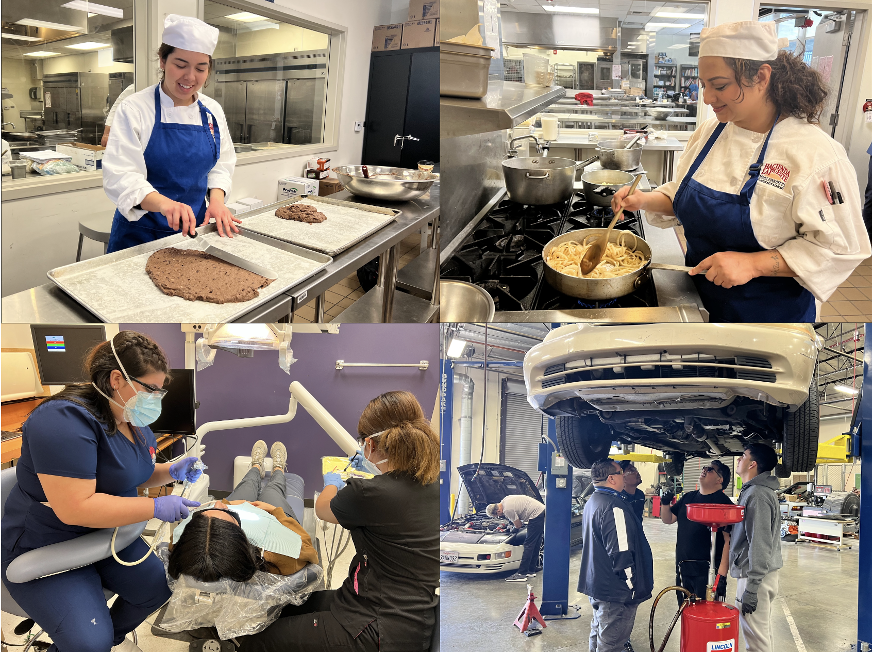
Rolling Out Your Organization’s Story
In our research and during our visit, we found HLPAE had a lot to offer that would benefit the adult learners in their community. Last fall, we conducted market research and used it to develop a brand narrative, logo and tagline. We also conducted a communications audit to understand their current communications situation and where improvements could be made.
With our research completed and their story clear, we launched a landing page to recruit new students that highlights several of their career education offerings.
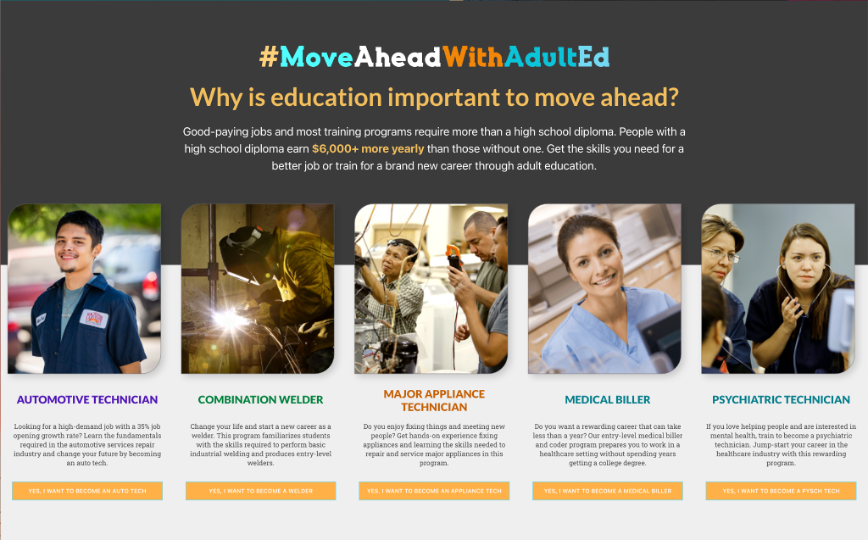
We’re now in the process of developing a digital campaign that focuses on their career programs to roll out their story to the right audiences.
Do you feel like you have a good story to tell but just aren’t sure where to start? We can help you identify and shape your organization’s story in an authentic way, so you can better connect with your target audiences. I’d be happy to chat with you. Just drop me a line at celina@fullcapacitymarketing.com.
Share this article

Thought Leaders in Workforce, Education & Entrepreneurship

Lead Generation Got You Down? Pivot to Building Brand Awareness to Boost College Enrollment Numbers
Is college worth it? That’s a question more and more people are asking themselves – and that is creating a need to rethink lead generation campaigns and take a step toward building greater brand awareness for your college.
Is college worth it? That’s a question more and more people are asking themselves – and that is creating a need to rethink lead generation campaigns and take a step toward building greater brand awareness for your college.
It used to be that college was perceived as the best path to a good future. But perceptions of higher education have been changing for some time now and inflation, coupled with the rising cost of tuition, are just some of the latest factors impacting enrollment, as covered last fall in this NBC News story, “Growing Number of Americans Questioning the Value of College Degree.”
The Hechinger Report’s “How higher education lost its shine,” published around the same time, shares that “Americans are increasingly dubious about the need to go to college. Fewer than one in three adults now say a degree is worth the cost, according to a survey by the Strada Education Network.”
The article goes on to explain that some of the reasons for this, as gleaned from focus groups and public opinion surveys, is widespread and fast-growing skepticism about the value of a degree, impatience with the time it takes to get one and costs that have finally exceeded many people’s ability or willingness to pay.
Add to those perceptions the fact that other educational options are increasingly available. This Inside Higher Education story covers the findings of a study on higher education enrollment declines and touches on some of those options.
“The respondents were also taking advantage of, and saw value in, alternative modes of education outside of pursuing a degree, according to the study,” the article reads. “Almost half of the group, 47 percent, reported they had taken or were currently taking classes on YouTube. Roughly a quarter of respondents had participated in courses to receive a license, and 22 percent participated in classes to earn a verified certificate.”
The factors converge to make it necessary for community colleges and college programs to evolve to survive, and they must rethink their brand in the process – who are they now and what do they offer that competing educational modes don’t?
People Need to Know You Before They Can
Trust You
Digital marketing and social media are important distribution channels for building brand awareness. You might think of them primarily as vehicles for lead generation, good tools to help get users to sign up for an upcoming event or capture their information so you can send them promotional emails in the future.
Social media is a good tool for lead generation, but it is also important for building brand awareness. The Digital Marketing Institute shares that brand awareness, as opposed to pure lead generation, is becoming a greater focus on social media.
So, what is brand awareness? Brand awareness focuses on making your target audiences familiar with your brand. You are letting them know you exist and what you are about. Your audiences can then form an opinion about whether they want what you have to offer. Once they are aware of your brand, and trust it, then they are in a position to take action.
Here’s another way of describing brand awareness, courtesy of this LOCALiQ article:
“To put it in terms of another analogy, brand awareness helps you grease the wheels when it comes to getting new customers. When a person is already familiar with your business, they’re more likely to click on your ads, give you their information, or become a customer. In fact, one study found that when searching for a business, 82% of people clicked on a result from a brand they were familiar with.”
This Wordstream by LOCALiQ article provides some good tips and examples of brand awareness.
Taking the time to build this awareness is an important part of any campaign. Before you ask a prospective student to enroll or sign up for an event, you want to spend 4-6 weeks running awareness ads, so prospective students have a chance to get to know you before you ask them to take action. So don’t forget when planning for your next campaign to dedicate a portion of your budget to brand awareness.
But First, Get Clear on Your Brand
Do you know what your college’s share of voice and sentiment are, for both specific classes and the college’s reputation overall—especially against those of your competitors?
Given the shifting views about higher education and its value, before you even start planning a brand awareness campaign, it’s important to understand how your current brand is being perceived within your unique market.
You can certainly gather this information by monitoring conversations around your brand on social media, Google alerts, reading online reviews of your organization and/or conducting surveys. At FCM we offer a full service brand sentiment analysis where we use listening tools that allow us to track brand mentions and conversations happening around topics important to your college.
Our tools have robust features that allow us to analyze all the collected data to understand customer trends, build campaigns backed by data, gather competitor intelligence, and support search engine optimization strategies.
Having this level of data and detail has been an eye opening experience for many of the colleges with whom we are working. One college was attempting to be known for its career education certifications in both its health and business programs.
The brand sentiment analysis revealed that while the college was doing pretty well in how health programs were being perceived within their market, business classes were being dominated by a local for-profit school.
The data gleaned from the analysis will ensure the right keywords and phrases are being associated with the college’s programs and backlinking on the website to support SEO, brand sentiment and visibility. The college will use public relations and organic digital strategies to lay the necessary foundation for a robust fall lead generation campaign.
If your organization is struggling with getting enrollments, let us help you get the right data to develop a smart rebranding strategy that garners high results for your lead generation campaigns. You can sign up for a complimentary consultation at https://www.fullcapacitymarketing.com/contact/#contact-form
Share this article

Thought Leaders in Workforce, Education & Entrepreneurship
